Playing DARTs with asteroids
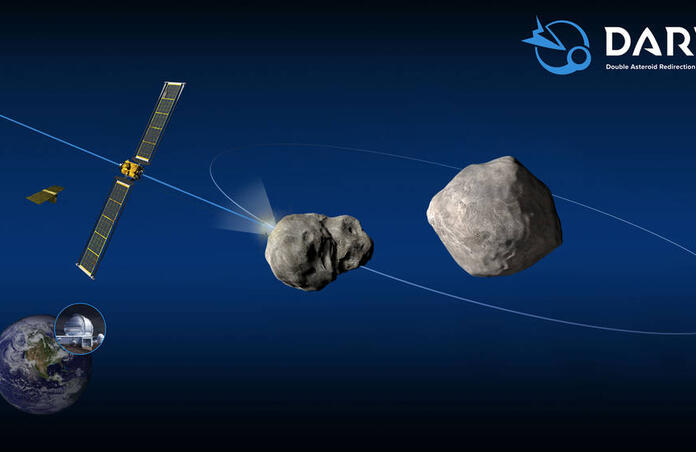
DART, the first ever experiment for planetary defence, was launched successfully.
At 10:21pm Pacific Time on Tuesday, a SpaceX Falcon 9 rocket carrying a precious load lifted off from the Complex-4 at Vandenberg Space Force Base, California. Once the second stage of the Falcon 9 got separated, the probe started unfolding its solar panels – the Roll Out Solar Arrays, or ROSA - and sending initial signals, leaving the Double Asteroid Redirection Test (DART) mission off to a good start. As part of the effort to understand how to protect Earth from hazardous asteroids, DART now embarks on a 10-month journey towards Near-Earth Asteroid Dimorphos.
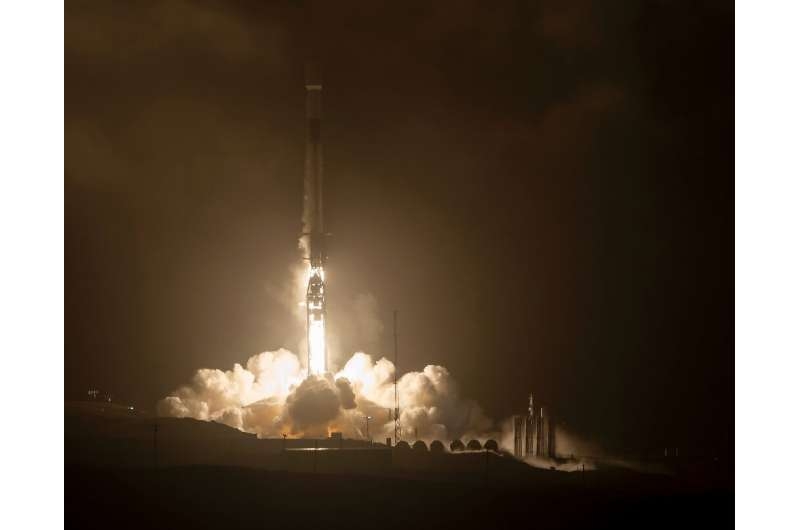
It's worth noting that besides ROSA, the DART spacecraft is also equipped with NASA’s Evolutionary Xenon Thruster (NEXT). The Xenon ion propulsion technique used in NEXT is expected to be three times more powerful than the first version of ion propulsion, which despite research dating as far back as the 1960s only got implemented in 2007 for the Dawn mission to Main Belt asteroids Vesta and Ceres. The method does have two major drawbacks, which are firstly that the ion engines will only work in the vacuum space (without other ions to interfere) and secondly, while they can produce record velocity change, ion propulsion systems don’t generate a very high thrust. This explains why a more traditional, chemical rocket is still needed for the launch. Nevertheless, NEXT’s specific type of electric propulsion is very promising, particularly to achieve flexibility in missions’ timelines, as the ion beams can be “switched off” and the voltage adjusted.
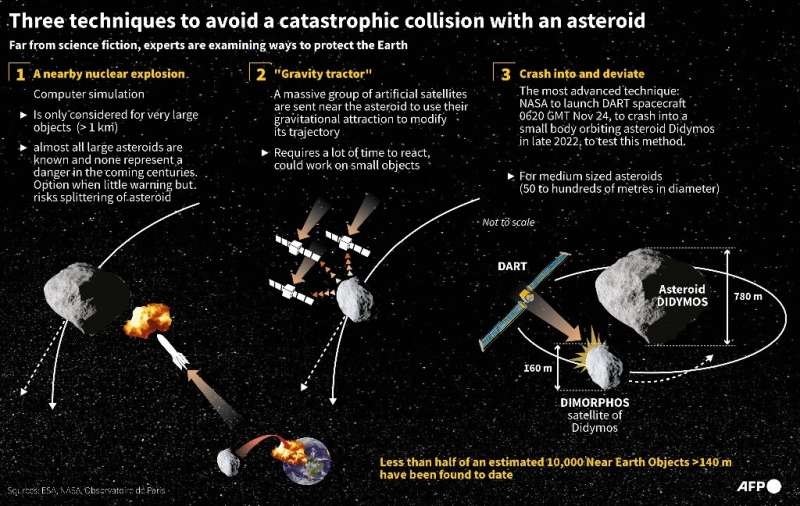
Turning our attention to DART’s target, please note that Dimorphos is NOT a threat to Earth – while DART, as the name suggests, is designed to modify an asteroid’s trajectory, this mission is a Test flight. DART is an impactor probe; it will crash into Dimorphos in the fall of 2022, with a speed of approximately 6.6 km/s, in an attempt to deflect it. The process will be made possible with the aid of DART’s only instrument, the on-board camera DRACO, combined with an autonomous navigation software.
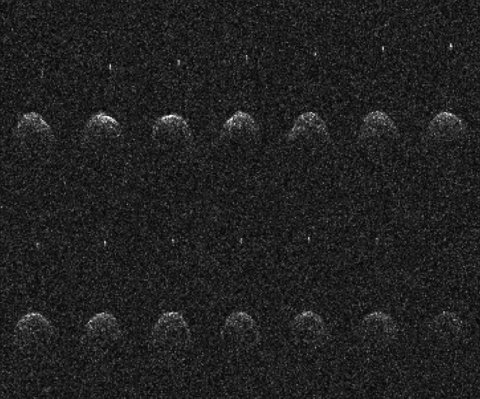
A sequence of Arecibo (RIP) images, 2003 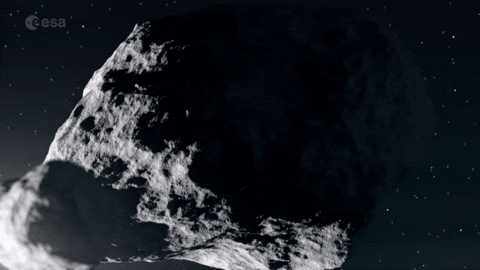
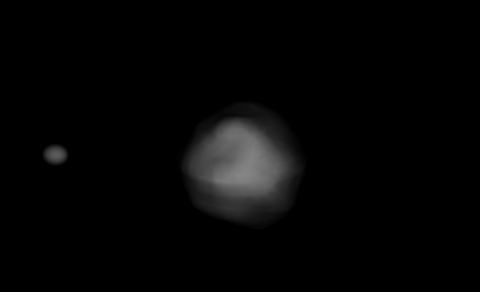
Simulation of the system, 2016
To measure the success of the mission, the CubeSat LICIACube transported by DART will get released 10 days before impact and will image the DART impact. On top of that, Earth-based observatories will monitor Dimorphos’ orbit, specifically the time it takes to revolve around its companion Didymos. Dimorphos is indeed a moonlet about 525 feet 160 meters (525 feet) wide, which makes it one of the smallest Solar System bodies to have been given an official name; it circles the much larger asteroid Didymos, which is 762m (2,500 ft) in diameter.
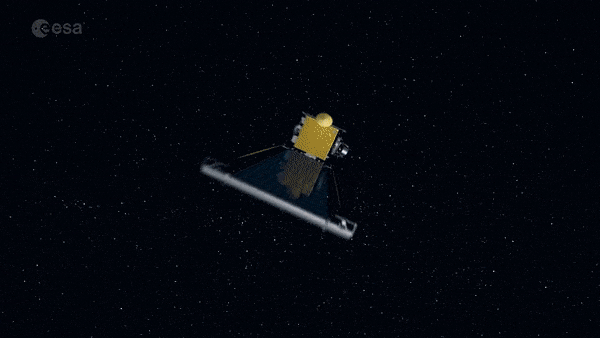
Another way the results will be confirmed is with ESA’s Hera probe, which will launch in 2024 to conduct a follow-up study of the impact crater left by DART’s collision with Dimorphos and the Dimorphos-Didymos binary system as a whole. Hera will be accompanied by two CubeSats, Milani and Juventas, which will conduct spectral analyses of the asteroids’ surfaces and radio soundings of the interiors, respectively.
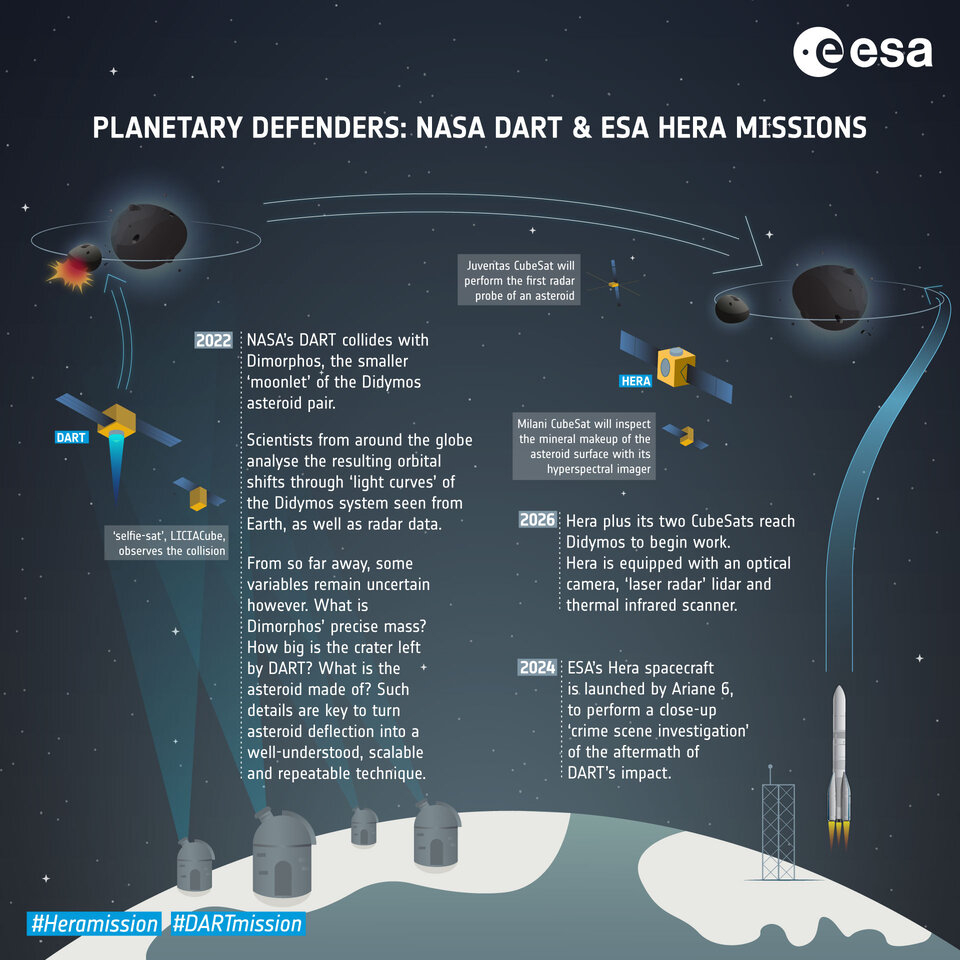
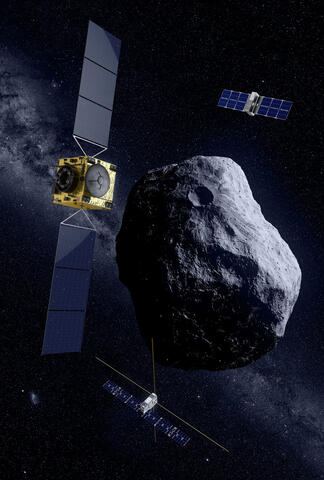
Artist view of Hera in action 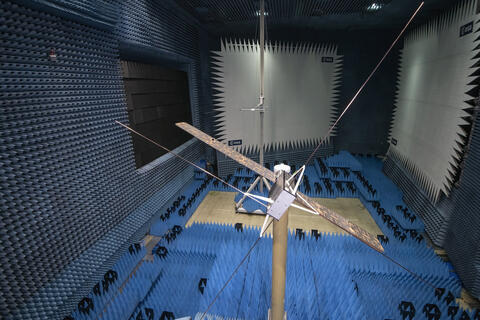
Juventas' radar being tested 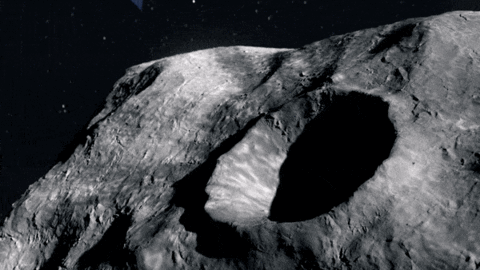
Hera above DART impact crater
The international Asteroid Impact and Deflection Assessment (AIDA) collaboration will greatly benefit from both DART and Hera’s findings, and will be much better prepared in the event of an asteroid actually heading towards Earth.
Cover Image: Schematic of DART mission, NASA/Johns Hopkins Applied Physics Lab
Image Credits:
1 - Falcon 9 (DART) takeoff, B. Ingalls/NASA via AP
2 - Three techniques, NASA/ESA/Observatoire de Paris/AFP
3 - Arecibo images, Arecibo Telescope
4 - Didymos asteroids, ESA
5 - Simulated image, Naidu et al., AIDA Workshop, 2016
6 - DART impacting asteroid, ESA
7 - Planetary defenders, ESA/F. Zonno
8 - Hera in action, ESA/Science Office
9 - Juventas model in Hertz chamber, ESA/P. de Maagt
10 - Hera at Didymos, ESA
